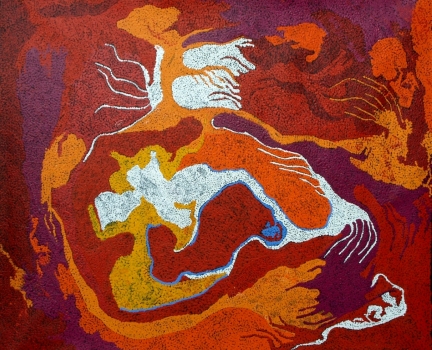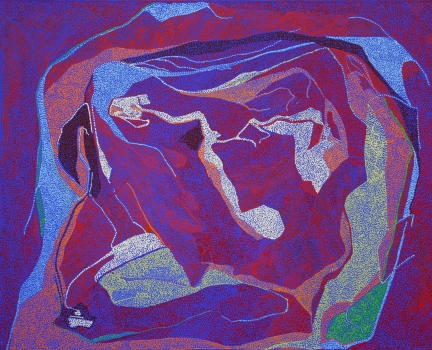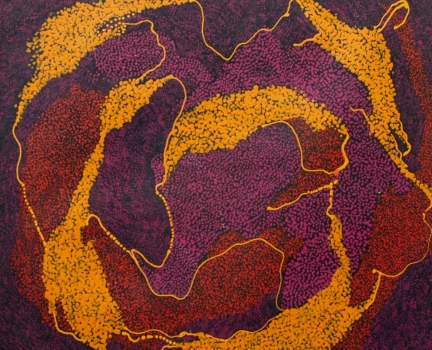Wind Dreaming Walpa Tjukurpa
Aboriginal people used ceremonies and their own long-standing knowledge of the environment to manage the natural world and prevailing conditions in the best possible ways available to them. Managing fire and water was important as a means to overseeing the best use of the country for animal numbers and the growth of native plants and grasses. Although viewed as nomadic, Aboriginal people moved within set boundaries, returning in the season when the land was most abundant and provided the best resources.
Artist Jorna Newberry paints stories from her mother’s country, and in particular the Wind Dreaming, related to the ceremony performed to induce the winds to blow. This ceremony was called the Walpa Tjukurpa, and comes from Jorna’s mother’s country at Utantja in Pitjantjatjara country, near the intersection of the three state boundaries of Western Australia, Northern Territory and South Australia.
Utantja is a large stretch of sacred ceremonial land located amongst hilly country, where a large rock hole provides sufficient water so people can gather in significant numbers. It is here that people come together at appointed times to prepare for ceremony, involving painting up with ochre in traditional designs, singing the sacred Tjukurpa song cycles and ceremonially dancing the symbolic journey of the Ancestors.
This country is rich with populations of kangaroos and camels, rock wallabies and birds. It provides good resources for people who hunt for their food and live off the land. Jorna Newberry explains the reasons behind the Walpa Tjukurpa: “The wind ceremony forms winds that create air to cool the land.” Jorna goes on to describe how wind also helps in hunting, as being down-wind from the animals makes it easier to hunt successfully. The ceremony is performed to induce better prevailing conditions for the people while they are on their sacred lands.
When she is painting the Walpa Tjukurpa story, Jorna Newberry uses a vibrant palette of colours, where circles and lines describe the movement of the wind, showing how it creates eddies over the land, and steadily grows larger as it surges across the open country. Jorna’s paintings are a tribute to this ancient ceremony and the entire practice of land and resource management carried out by Abnoriginal people.
Read More:
Back to Aboriginal Dreamtime Stories





